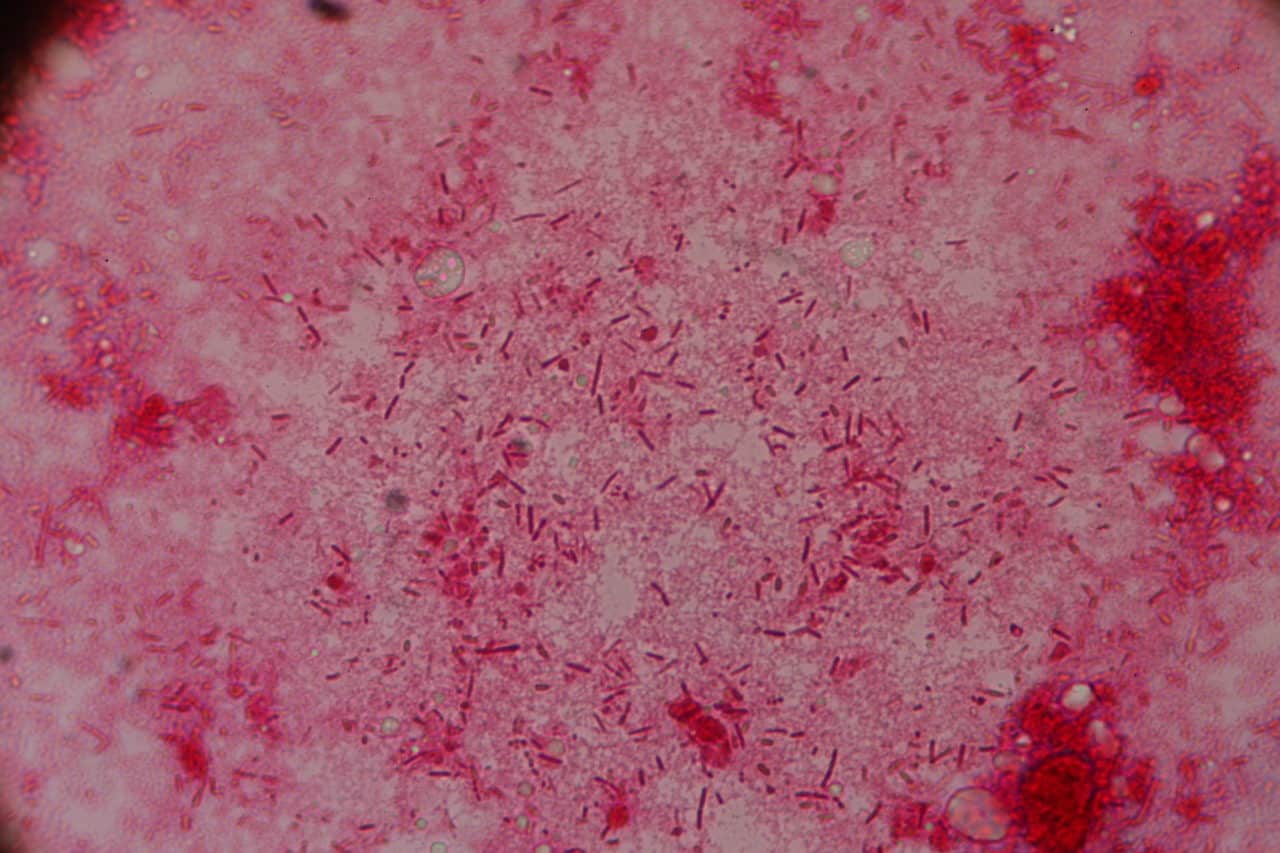Microscopy is a useful tool to diagnose honey bee problems. While working on some content for eXtension.org, I helped record the following video. These bacterial spores where found in a comb showing symptoms of American foulbrood disease.
Paenibacillus larvae With Brownian Motion From a Honey Bee Colony
Video description: Spores of the causative agent of American foulbrood disease in honey bee colonies are shown here. Paenibacillus larvae spores (seen here at 1000x) display brownian motion when the microscope slide is prepared with the hanging drop method. Acknowledgements: Organized, prepared slide: Michael E Wilson, University of Tennessee; videography & microscopy: Ernest Bernard, University of Tennessee; Video review: Bart Smith, USDA-ARS Beltsville Bee Research Lab.
American foulbrood and European foulbrood are two separate diseases. American foulbrood is caused by the bacteria, Paenibacillus larvae. Severe cases of European foulbrood can sometimes be mistaken for American foulbrood. A diagnostic test kit or a microscopic examination should accompany the observation of symptoms. The USDA-ARS ‘Diagnosis of Honey Bee Diseases‘ handbook gives instructions on preparing a microscope slide using the ‘modified hanging drop’ method, (page 43 of the attached handbook.) Drawings of spores associated with the two foulbrood diseases are also provided.
As seen in the video above, Paenibacillus larvae.spores exhibit ‘Brownian motion’ when preparing the slide with the modified hanging drop method. I’m not an expert at identifying honey bee bacteria, so I asked Bart Smith (USDA-ARS Beltsville Bee Research Lab), to confirm the identification. Brownian motion is a good indicator, however, the handbook also points out that the bacteria Enterococcus faecalis, may also exhibit Brownian motion, so you still need to pay attention to the shape of the bacteria and symptoms found in the colony. Enterococcus faecalis is a bacteria associated with European foulbrood, although it is not considered the causative agent of European foulbrood (Melissococcus pluton is the causative bacteria. for a detailed explanation see: European Foulbrood: A Bacterial Disease Affecting Honey Bee Brood.
Brownian motion can also be effected by how the slide was prepared. Out of 5 slides I prepared from the comb, 2 of those did not have apparent Brownian motion, possibly because I used less water on those two. The American Heritage Scientific Dictionary defines Brownian motion as, “The random movement of microscopic particles suspended in a liquid or gas, caused by collisions between these particles and the molecules of the liquid or gas. This movement is named for its identifier, Scottish botanist Robert Brown (1773-1858).”
If you don’t have access to a microscope, or would otherwise like help determining what kind of bacterial infection you may have, the USDA-ARS has a free, Bee Disease Diagnosis lab where you can send samples, see this link..
Beekeepers are becoming more microscope savvy with the need for microscopy to determine infection of Nosema spores. I have found microscopy for examining bacterial infections useful as well. Sometimes the test kits don’t work (usually after they have expired), or we simply run out and they can sometimes be hard to get. This past year, we had a particularly nasty outbreak of European foulbrood in our University apiaries, along with a few American foulbrood cases that made diagnosis complicated. Microscopic examination was helpful in this case. However, sometimes looking brings up more questions than answers. In the picture below, I found this apparent bacteria in plentiful amounts from a colony that had European foulbrood symptoms. The colony also tested positive for European foulbrood with a test kit. However, I was not able to clearly find any of the bacteria associated with European foulbrood (although it could have easily been missed), and instead found mostly the unidentified bacteria below.

